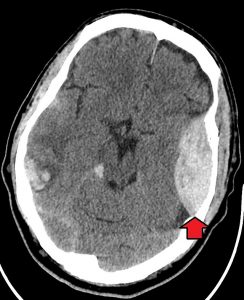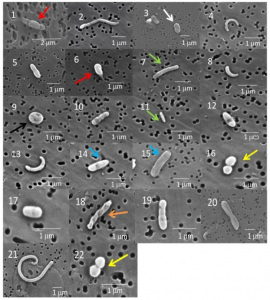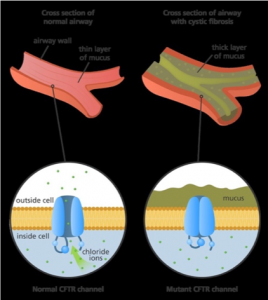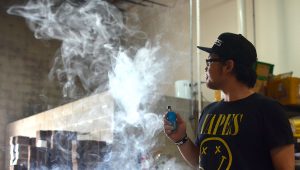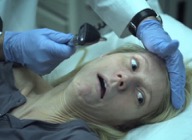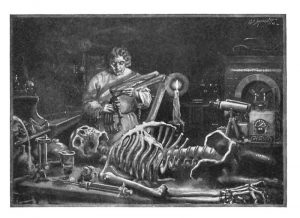Madeline Warren
18 November 2019
Summary of More Food, Less Hype
On his talk show, Bill Nye Saves the World, Bill Nye discusses many scientific subjects affecting the modern world. In the fourth episode of the first season, Nye examines genetically modified organisms. At the beginning of the episode, he demonstrates an experiment for the viewers using strawberries. He mixes dish soap, water, and salt and places strawberries into a bag. He then smashes the strawberries and strains them. After he pours the mix into a glass dish with the strawberry pulp and adds rubbing alcohol. Lastly, he extracts some of the DNA from the strawberries. Although Nye has not always supported GMOs in the past (Washington Post), he explains in the show that after he watched a debate about them and after researching his own, he ultimately says “I believe the advantages of genetically modified crops outweigh the downsides. (Saves the World). He then talks to a correspondent who visited a farmers market to get the shoppers’ opinions on GMOs. He found that many people are still unsure about them. Nye talks to a panel of experts to discuss further. The panel includes the Executive Vice President, and Chief Technology Officer of Monsanto, a fifth-generation farmer from Iowa, and a Professor of Agricultural from North Carolina State University (Saves the World).
Explanation of How Biology is Integrated into the Show
A Genetically Modified Organism commonly known as GMOs is “an organism that has had its genetic material … altered in a laboratory” (Access Science). The biology of GMOs and whether or not they are ethical is discussed throughout the show. The organisms are modified by putting in or taking out “genetic sequences.” These changes made to the genetic material are man-made as opposed to letting them grow on their own (Access Science). The three panelists and Nye agree that there are more benefits to using GMOs than not. Benefits include an increase in crop growth and a decrease in pesticides needed to be used on crops. (Saves the World).
Critique of the Biology in the Show
Nye’s opinion changed on the topic of GMOs and it has earned him more than a few head turns. An adaptation to Nye’s book, Undeniable, includes revisions to his GMO chapter. In his original chapter, Nye said he believed it would be almost impossible to eliminate the risks of GMOs. After visiting scientists at Monsanto, and doing his own research, Nye changed his views. He said “I’m very excited about telling the world. When you’re in love, you want to tell the world” (Washington Post). Some scientists were unhappy with Nye’s findings. Many believe he got caught up in the corporate side of GMOs and that his connections with the company are controversial. Despite some people being skeptical, Nye reassured his fans and doubters that the company alone was not the reason for his change. And that it was in fact due to his is own scientific examination (Washington Post). A scientist from the University of Florida claimed Nye is a hypocrite, comparing his GMO findings to the findings of those who do not believe in climate change and evolution (Washington Post).
An Explanation for How the Biology Relates to the Topics Discussed in Class
GMOs were discussed during Unit 2 of our Biology class. After the lecture on DNA and Biotechnology, everyone in the class explained their previous knowledge and opinions on them and whether or not they agreed or disagreed with the use of them. Many people in the class reported having a neutral opinion or did not know much about them at all. A handful of people had prior experiences with them growing up and remembered hearing their parents discuss them. A few individuals went all the way to say they thought they were “unnatural.”
Figure 1

Fig. 1 Bill Nye poses on the promotional poster for his Netflix show. “#TvPoster Bill Nye Saves the World (2017) [1500 x 2222]” by junaidrao is licensed under CC BY-NC-ND 2.0
Works Cited
“More Food, Less Hype” Bill Nye Saves the World, season 1, episode 4, Netflix, 21 April 2017. Netflix, https://www.netflix.com/watch/80117905?trackId=14277281&tctx=0%2C0%2Ce0d45a96-44d2-4974-80c7-3a6d5aeb4376-584323745%2C%2C. Accessed 18 Nov. 2019.
Kollipara, Puneet. “Proof He’s the Science Guy: Bill Nye Is Changing His Mind about GMOs.” The Washington Post, WP Company, 29 Apr. 2019, www.washingtonpost.com/news/energy-environment/wp/2015/03/03/proof-hes-the-science-guy-bill-nye-is-changing-his-mind-about-gmos/. Accessed 18 Nov. 2019.
AccessScience Editors. “Genetically Modified Organism (GMO).” AccessScience, McGraw-Hill Education, Sept. 2019. Accessed 18 Nov. 2019.

